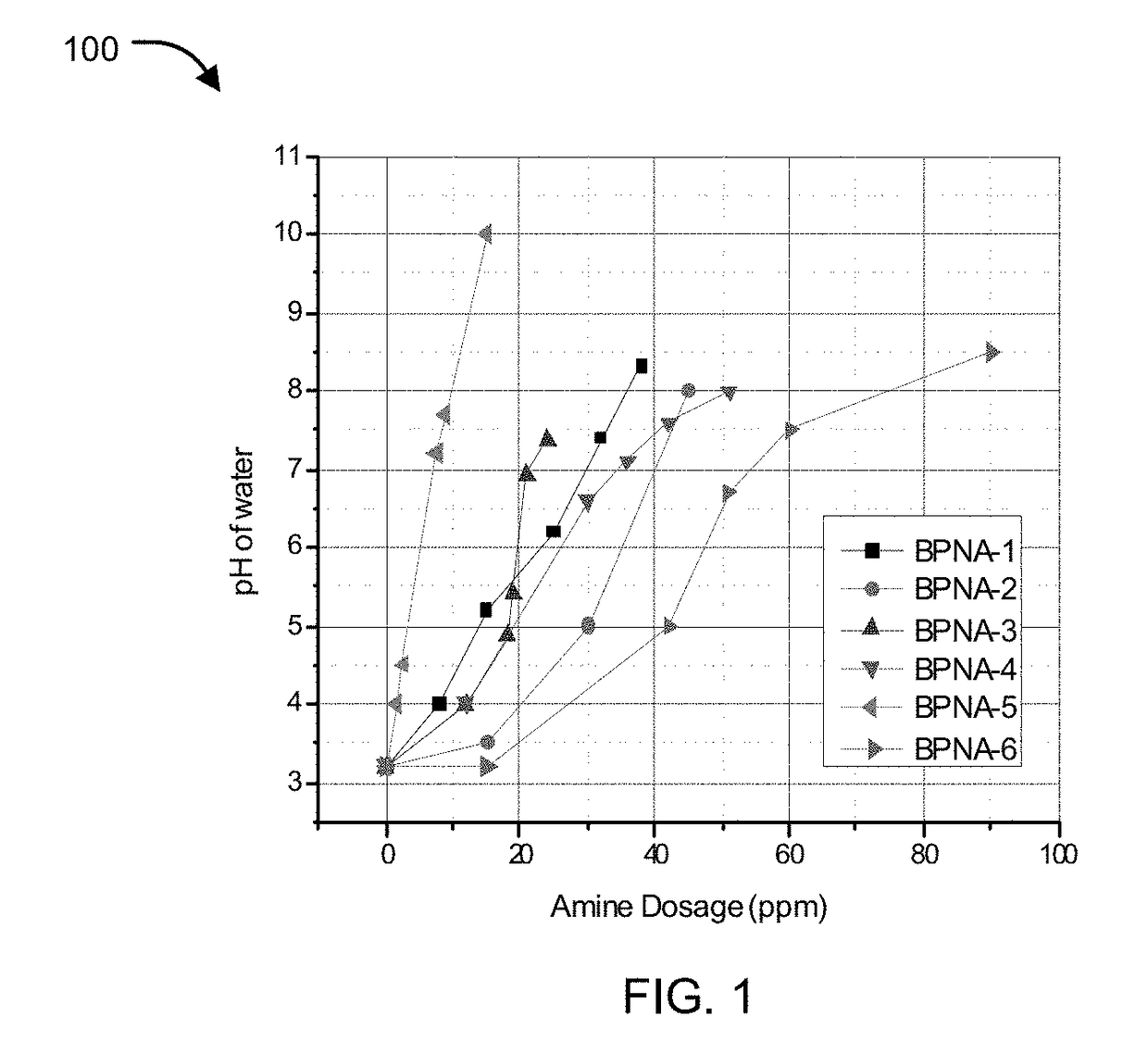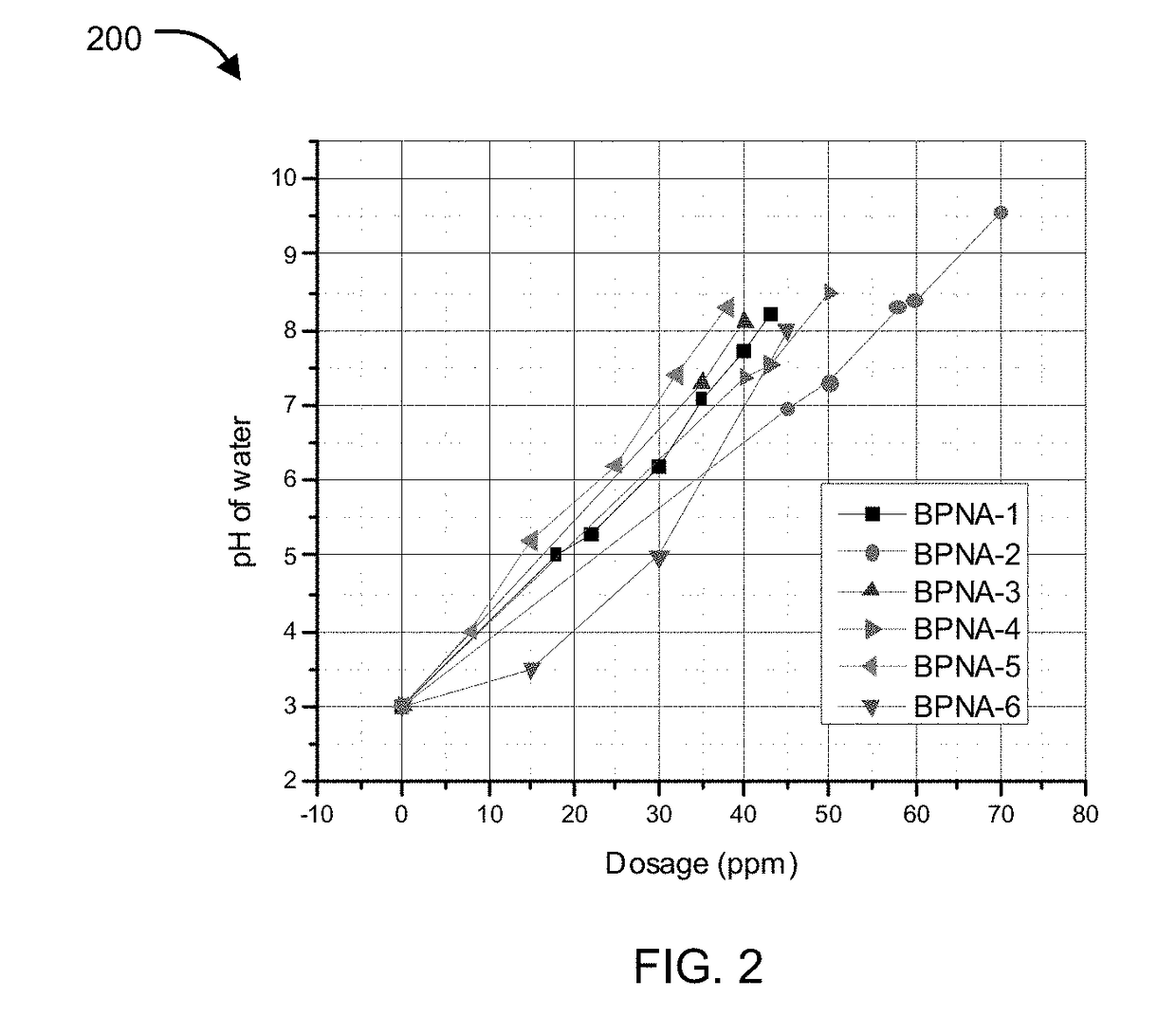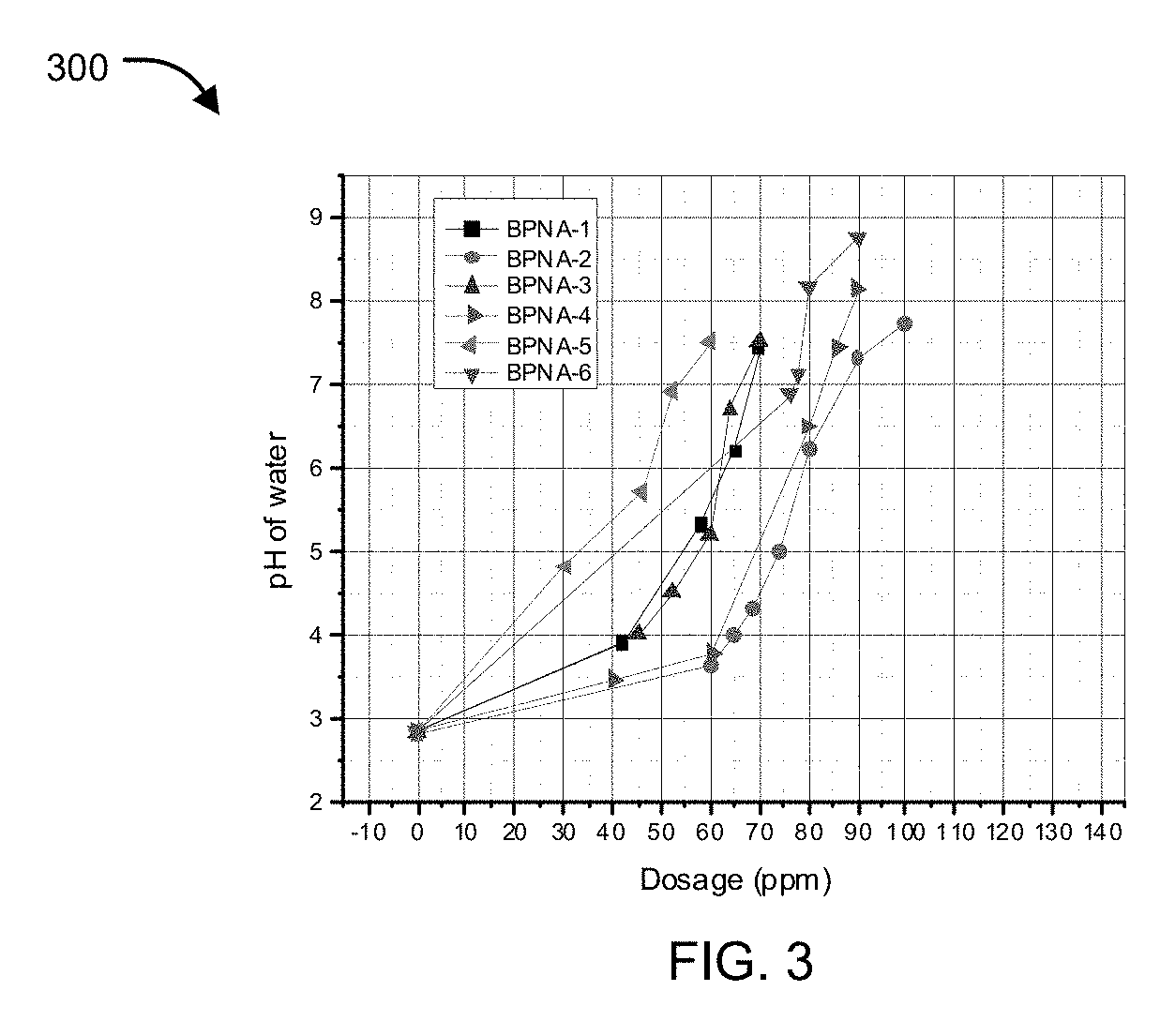Crude unit overhead corrosion control using multi amine blends
a technology of amine blends and distillation units, applied in the direction of corrosion/fouling inhibition of treatment apparatus, distillation equipment, hydrocarbon oil treatment, etc., can solve the problems of high acidity of the dangerous corrosive, and high ph of the water condensate, so as to inhibit the corrosion of the same
- Summary
- Abstract
- Description
- Claims
- Application Information
AI Technical Summary
Benefits of technology
Problems solved by technology
Method used
Image
Examples
example 1
ation Capacity of Amine Blends (Compositions) at Varying Chloride Concentrations
[0055]Different amine blends (compositions) were prepared with their composition as provided in Table-1 below and were tested against varying chloride concentrations. The results of the experiments are as illustrated in FIGS. 1, 2 and 3 for chloride concentrations of 50 ppm, 100 ppm and 200 ppm respectively.
TABLE 1Amine CompositionsMono-Cyclo-ethanloamineMethoxypropylMorpholinehexylamineName(vol %)amine (vol %)(vol %)(vol %)BPNA-15304520BPNA-212283030BPNA-330253015BPNA-410123840BPNA-536311617BPNA-640301515
example 2
tion of Corrosion Rate (CR) at Various Chloride Concentrations of Water Condensate
[0056]Effect of chloride concentration on corrosion of carbon steel was experimented using an overhead corrosion simulator, with and without addition of amine composition of the present disclosure and the results are shown in FIG. 7. Naphtha containing different concentration of chloride salts was used for the experiment. It was noticed that the corrosion rate increased with increase in chloride concentration without the presence of amine composition BPNA-5. Dosages of amine composition were optimized with respect to overhead operating conditions and chloride concentration. Further, it was observed that the corrosion rate increased with increase in chloride concentration of the water condensate. As shown in FIG. 7, addition of small amount of amine composition, for example 20 ppm for a chloride concentration of 20 ppm, decreased the corrosion rate. Further, the required amounts of amine composition for...
example 3
tion of Corrosion Rate at Various pH Levels of the Water Condensate
[0057]Effect of pH on corrosion of carbon steel was experimented using an overhead corrosion simulator. Naphtha containing 40 ppm chloride was treated with 25 ppm BPNA-5 and the pH was monitored. It was observed that at lower pH (2.0-4.5) the corrosion rate was very high, but at the pH range 5.75-6.25 the corrosion rate was comparatively low. As shown in FIG. 8, the pH slowly increased and became almost stable in the range of 5.75-6.25. It was observed that 25 ppm of amine composition is optimal dosage for 40 ppm chloride solution.
PUM
| Property | Measurement | Unit |
|---|---|---|
| temperature | aaaaa | aaaaa |
| pH | aaaaa | aaaaa |
| specific weight ratio | aaaaa | aaaaa |
Abstract
Description
Claims
Application Information
 Login to View More
Login to View More - R&D
- Intellectual Property
- Life Sciences
- Materials
- Tech Scout
- Unparalleled Data Quality
- Higher Quality Content
- 60% Fewer Hallucinations
Browse by: Latest US Patents, China's latest patents, Technical Efficacy Thesaurus, Application Domain, Technology Topic, Popular Technical Reports.
© 2025 PatSnap. All rights reserved.Legal|Privacy policy|Modern Slavery Act Transparency Statement|Sitemap|About US| Contact US: help@patsnap.com



